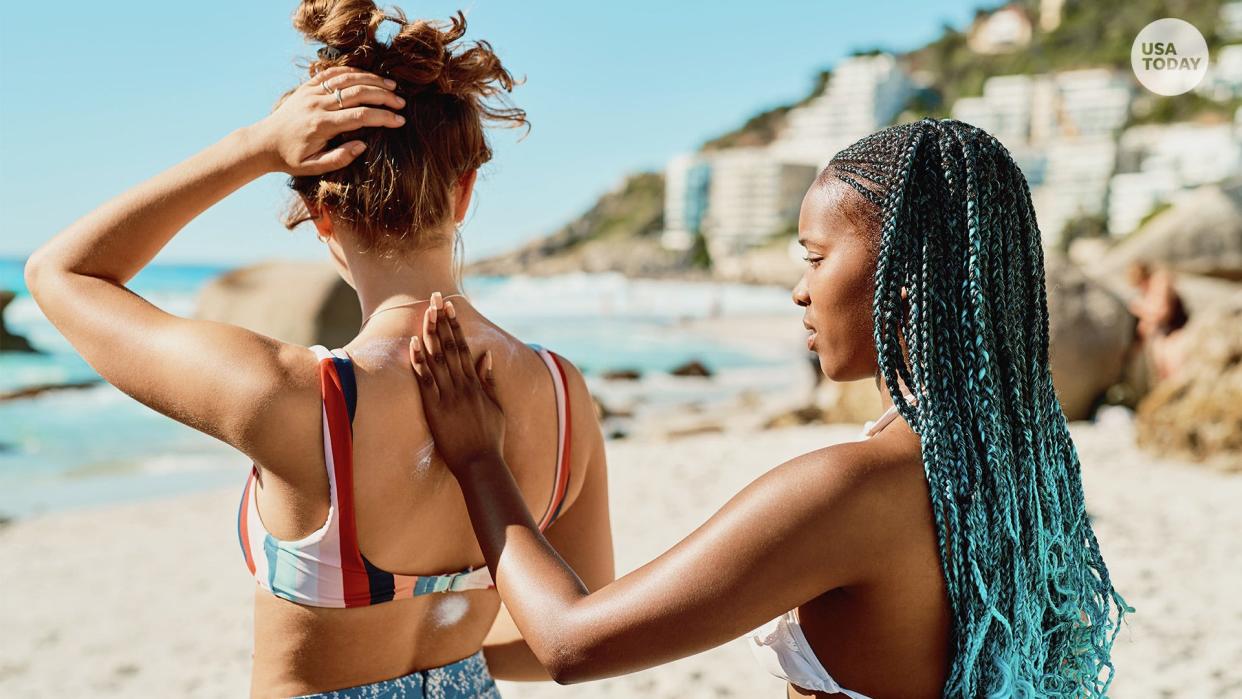Pediatrics in Brevard: It's important to properly apply sunscreen to kids during summer

July is Ultraviolet Safety Month. Here in the Sunshine State, we need to think about ultraviolet (UV) safety year round.
UV radiation from the sun and artificial sources are a known carcinogen. To protect ourselves from this harmful damage, it is important to think about sun safety prior to heading outdoors.
It is also important to avoid tanning beds or sun lamps, as these also emit harmful UV radiation.
UV radiation is made up of UVA and UVB rays.
The UVA rays, also known as the aging rays, prematurely age the skin, leading to age spots and wrinkles.
This wavelength of radiation can also pass through windows.
UVB rays, also known as burning rays, are known for causing sun burn. They are blocked by window glass.
Previous Pediatrics in Brevard columns:
Ladies, get these tests: Women should begin these three health screenings at an early age
Autism awareness: Do you have Autism concerns with your child? Here's what to know
Brain pain? Here is a breakdown of the types of headaches and when to worry
It is important to remember UVA rays prior to road trips, as those rays can pass through glass and cause damage to the skin.
Contrary to prior belief, there is no amount of “safe” tan or “base” that will protect our skin from harmful radiation. Each encounter adds damage to our skin, which prematurely ages our skin and increases the risk for skin cancer.
When considering sun safety in Florida, avoid peak sunlight hours from 10 a.m. to 4 p.m. to avoid the most direct sun exposure.
If unable to avoid peak hours, wear UPF or sun rated clothing to cover as much skin as possible while avoiding overheating.
For areas of skin that cannot be covered with clothing, apply sunscreen or sunblock with at least SPF 30.
Plan to apply sunscreen 15 minutes prior to sun exposure, then reapply every 80-120 minutes. If water exposure or excessive sweating, you may need to be reapplied more often.
Two kinds of sunscreen
When choosing a sunscreen there are physical sunscreens and chemical sunscreens.
The active ingredients in physical sunscreens are zinc oxide or titanium dioxide. This type of sunscreen sits on the surface of the skin and acts as a physical barrier.
They tend to leave a white residue on the skin, but are more suitable for sensitive skin.
A chemical sunscreen may include oxybenzone, avobenzone, octisalate, octocrylene, homosalate and octinoxate.
These ingredients work as a sponge to absorb the sun’s UV radiation. Chemical sunscreens are less likely to leave a white residue because they are absorbed in to the skin’s surface.
There are many forms of sunscreen available including lotions, sticks and sprays.
In general, the formulation that you’re able to reapply consistently is the best choice. Follow product instructions on how much sunscreen should be applied.
You need more than you think
We often don’t use enough sunscreen to deliver the SPF listed on the product container.
For an average adult, 1 ounce of sunscreen is required to cover the body. If reusing sunscreen from the previous season, check the expiration date, as the active ingredient may not be as effective over time.
Don’t forget small areas like backs of hands, tops of ears, neck and tops of feet.
There is still limited information from the FDA regarding the safety and efficacy of spray sunscreens.
It is difficult to determine how much product is being delivered, so hard to know if achieving adequate coverage.
If using a spray sunscreen, avoid windy areas that can disperse the product prior to reaching the skin.
It is best to avoid inhalation of the product, so consider using a different formulation around the head and neck. After spraying on the skin’s surface, rub in the product for more even distribution.
Limits on age and sunscreen
According to the American Academy of Pediatrics and the American Academy of Dermatology, sunscreen should be avoided for children under 6 months of age.
Avoid direct sun exposure for this age group to avoid overheating, as well as sunburn.
Keep infants in the shade as much as possible and cover with wide-brimmed hat as well as long sleeved pants and shirt to avoid direct sun exposure.
Monitor for overheating, which could include red appearance, fussiness and crying. They may need to feed more frequently to avoid dehydration.
In general, outdoor time should be limited for infants during peak summer hours.
If you get a sunburn, avoid additional UV exposure while the area is healing. Use a cool bath to reduce the heat to the area.
A gentle moisturizer may help with skin dryness after bathing.
Be sure to drink extra water as well to restore hydration to the entire body, including the skin. If the sunburn blisters, this is evidence of a second degree burn.
Avoid peeling or picking at blisters and avoid secondary infections.
If the blisters cover a large area, or if you develop fever, chills, or headache, it is important to seek medical care.
Dr. Betty Cheney Kelly attended medical school at Wright State University Boonshoft School of Medicine, Dayton, Ohio. She moved to Orlando to complete her pediatric residency at Arnold Palmer Medical Center and joined Pediatrics in Brevard in 2019.
This article originally appeared on Florida Today: Suns safety in Florida is important, especially for the little ones

